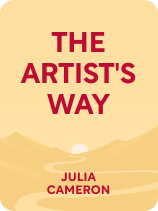

This article is an excerpt from the Shortform book guide to "The Artist's Way" by Julia Cameron. Shortform has the world's best summaries and analyses of books you should be reading.
Like this article? Sign up for a free trial here.
What’s the origin of morning pages? What purpose do they serve? Have you tried this practice?
In Julia Cameron’s book The Artist’s Way, morning pages are presented as a method to unleash the creative force. They do this by establishing a close connection with your inner artist—the reservoir of unconventional ideas, raw emotions, dreams, and desires inside you.
Read more to learn what morning pages are and how you can harness them to declutter your mind and set your artistry free.
The Artist’s Way—Morning Pages
In The Artist’s Way, morning pages are defined as three full pages written every morning right after waking up. These pages can be about anything—last night’s dreams, your plans for the day, or things you’re excited or worried about. Don’t worry about making these coherent or well-written—just consider them a “brain dump.”
(Shortform note: Since the publication of The Artist’s Way in 1992, Cameron’s concept of morning pages has become a common practice for those in the spiritual and creative communities, even among people who haven’t read Cameron’s books. Despite the term being coined nearly 25 years before the popularization of TikTok, the platform’s “Morning Pages” hashtag has over eight million hits. Many prominent blogs and social media pages specializing in creativity or spirituality have recommended the practice as well. Renowned artists like Martin Scorsese also use and endorse morning pages.)
Cameron explains that morning pages help you connect with your inner artist in numerous ways. First, they clear your head of negative thoughts, concerns, and extraneous information that impact your mood or focus during the day. Worrying and overthinking often block out your less logical but more creative inner artist, so clearing this clutter right after waking up makes it easier to hear the voice of your inner artist throughout the day.
Further, Cameron argues that brain dumping through morning pages often uncovers hidden yet meaningful feelings and ideas that may otherwise remain unsurfaced. For example, you might recognize a pattern in your life that will inspire your art. Or, you may realize you’re deeply unhappy about an ongoing situation that must change to improve your well-being.
(Shortform note: In addition to clearing your mind and uncovering meaningful thoughts and ideas, writing is also a form of spiritual renewal. Wellness experts explain that writing is a time of reflection that can help you determine whether you’re on a life-enhancing spiritual path and what, if anything, is getting in your way. Further, writing functions like taking a “spiritual breath”—it helps you become aware of the divine presence in your body and soul. Since Cameron argues that creativity comes from your connection to the divine, these additional benefits will arguably also serve to boost your creativity.)

———End of Preview———
Like what you just read? Read the rest of the world's best book summary and analysis of Julia Cameron's "The Artist's Way" at Shortform.
Here's what you'll find in our full The Artist's Way summary:
- How you can overcome obstacles and blocks to reach your creative potential
- An overview of Julia Cameron's 12-week program on accessing the creative force
- Why many artists fall into addictions and how to resist them






